“I Dare You” – Part Two | The Resurrection
A) Show Us the Father
In John 14, Jesus is briefing His disciples, preparing them for the task of taking the baton of the gospel to the masses. He’s getting ready to be crucified and after His Resurrection. He’ll be headed home and it will be up to His disciples to ensure that His Message continues to be proclaimed.
In verse 6, Jesus states that no one can come to the Father except through Him. For those who’ve been brought up in Sunday School, this is familiar territory. But for the disciples, these are still uncharted waters and you can see that in Philip’s response to Jesus when he says, “Lord, show us the Father and that will be enough for us.”
Philip articulates what we all want to see and know. While creation very eloquently proves the reality of a god, it doesn’t provide a definitive picture of the face of God. We want to know God. We want to hear His Voice, we want to experience His Company, we want to feel His Power. But in order for that to happen, we have to have an address.
Jesus was an impressive figure. He didn’t teach as a mere educator. Rather, He spoke as the One Who actually wrote the textbook He taught out of (Mk 1:22 [see also 2 Tim 3:16-17]). Throughout His ministry, He was constantly underlining Himself as God Incarnate. He was here to give God a specific address in history so that people could better understand the Nature and the Message of God.
As logical as that all sounds as far as a Divine strategy is concerned, it’s still a stretch for anyone to embrace the idea that the Person you’re sitting next to is the Creator of the Universe and the Redeemer of your soul. Philip had been with Christ since the beginning of His earthly ministry. We find him first in John 1 and at the time, he’s so confident that he has found the Messiah, he says as much to Nathanael in verse 45.
His confidence was probably bolstered in John 6 when Jesus asks him for his thoughts on how they should go about feeding a crowd that included 5,000 men plus whatever women and children were in the mix. Philip had to be inspired as he watched Jesus use two fish and five barley loaves to feed a group that Philip himself had said would require eight months wages to facilitate.
Philip is the one who some Greeks approached in John 12:20 with a request to interview Jesus which shows that Philip was recognized as one of Christ’s cadre even to those who are on the outside looking in. Perhaps that’s why Jesus expressed a little surprise at Philip’s request in John 14:8 when he asked Jesus to show them the Father.
No doubt, Philip was thinking of something along the lines of God’s appearance on Mount Sinai in Exodus 19:16-19 [see Ex 20:18-21] or Exodus 33:22 when God manifested Himself in the context of something obvious and dramatic.
By this point, Jesus had performed in a way that qualified as obvious and dramatic. Making the blind see, healing those who had been paralyzed and bringing Lazarus back to life were all significant indicators that Jesus was more than just a charismatic educator.
But miracles lose their luster after a while. It didn’t take the Hebrews long for them to completely forget and / or rationalize away the obvious Reality of God even after they had been led through the Red Sea. Exodus 15 has Miriam celebrating the demise of the Egyptians. Three months later they’re at the foot of Mount Sinai in Exodus 19:1. By this time, the miracle celebrated in Miriam’s song isn’t the only extraordinary thing that has occurred. The crossing of the Red Sea (Ex 14:21-22), the destruction of the world’s most formidable military force (Ex 14:27-28), a miraculous provision of water, meat and bread (Ex 15:25; 16:13-36; 17:5-7) and a successful stand against the Amalekites (Ex 17:8-13) – all of these things now are etched into the minds of the Israelites as Moses heads up to the top of the mountain and stays there for 40 days and nights. But at some point while he’s gone, the Israelites decide that the God Who has been leading them isn’t God at all. Rather, their god is this cow made out of gold they decided to whip up using the jewelry they were wearing at the time (Ex 32:1-4).
Miracles are conclusive, but only for a season. At least that’s the way human nature affects their significance over time. Still, Jesus responds to Philip’s request by reminding him of the miracles that He had performed up to that point. Not only were they obvious indicators that a supernatural Someone was present, but those same miracles were fulfillments of specific prophecies that had been articulate centuries beforehand because that was all a part of the prophecy that pertained to Christ which He had fulfilled to the letter (Is 9:6; 29:18-21; 35:5-6; 61:1).
There was one miracle in particular, however, that Jesus had highlighted as being especially compelling and that was the miracle of His Resurrection which He spoke of in Matthew 12:39-40. He’ll refer to it again as He responds to Philip and the rest of the disciples now in the context of what is documented in John 14-17.
The Resurrection is huge! H.P. Liddon says: “Faith in the resurrection is the very keystone of the arch of Christian faith, and, when it is removed, all must inevitably crumble into ruin.”7 The Resurrection is what Jesus would have on His business card if He carried one at all because He is the only religious figure in human history to not only claim that He was God, but proved it by voluntarily dying and coming back to life. That was the one miracle He put on the table when He was pressed for some kind of definitive sign. You see that in Matthew 12:39-40 and Paul reiterates it in Romans 1:4.
So, in a way, this all becomes very easy in that Jesus’ claims are very unique when compared to every other religious system. He does not claim to be a messenger, rather He claims to be God (John 8:58; 10:30), and then He proves it by His Resurrection. So if His Resurrection is an event that can be validated, then the platform of the cynic has just become very unstable.
C) He Really Did Die
But how do you prove it? There’s no film to refer to, all of the eyewitnesses are long gone so what’s left as far as a credible source of information? And let’s take this a step further. Let’s assume for the sake of this discussion that the Bible is not admissible as evidence, apart from those things that can be regarded as historical events.
The approach that we take then is the same approach that is taken in academic circles when seeking to establish the historicity of a particular event or person. You assemble all those things that mention that person or event and then draw your conclusions based on the substance of their testimony.
First of all, the fact that Jesus died and that His body was never recovered is not a matter of conjecture or speculation.
The resurrection of Christ is an event in history where in God acted in a definite time-space dimension. Concerning this, Wilbur Smith says, “The meaning of the resurrection is a theological matter, but the fact of the resurrection is a historical matter; the nature of the resurrection body of Jesus may be a mystery, but the fact that the body disappeared from the tomb is a matter to be decided upon by historical evidence.8
Jesus did exist and He did die and His body was never definitively accounted for after He was laid to rest. That much can be determined from the wealth of literature, art and even the presence of the Christian church as an institution in that it is based on the historical as well as the theological reality of Christ.
What happened to Christ’s body is the question. Critics have either been looking for a corpse or insisted that one did exist for over two thousand years. But they make that assertion in the face of an overwhelming amount of evidence that cannot be overlooked without the risk of being less than objective in your analysis.
D) Josephus on the Resurrection
Josephus was a Jewish historian that lived from 37 to 100 A.D. He was employed by the Romans and he mentions this about Jesus in his “Antiquities of the Jews”:
At this time there was a wise man who was called Jesus. And his conduct was good, and [he] was known to be virtuous. And many people from among the Jews and the other nations became his disciples. Pilate condemned him to be crucified and to die. And those who had become his disciples did not abandon his discipleship. They reported that he had appeared to them three days after his crucifixion and that he was alive.9
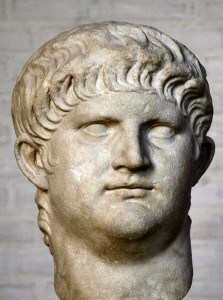 In many ways, this one quote is a slam dunk. Here’s a man who had access to people who were contemporaries of Christ. He was born only seven year after Jesus died and the fact that he mentions Jesus’ resurrection in what would be considered a secular text is equivalent to Christ’s Resurrection being reported in the news. Some have very vehemently attempted to discount this quote as something that Josephus could not have written. However, this same passage written by Josephus was quoted by Eusebius in the fourth century and is included in the most recent Loeb edition of his works.10 It is credible.
In many ways, this one quote is a slam dunk. Here’s a man who had access to people who were contemporaries of Christ. He was born only seven year after Jesus died and the fact that he mentions Jesus’ resurrection in what would be considered a secular text is equivalent to Christ’s Resurrection being reported in the news. Some have very vehemently attempted to discount this quote as something that Josephus could not have written. However, this same passage written by Josephus was quoted by Eusebius in the fourth century and is included in the most recent Loeb edition of his works.10 It is credible.
E) Tertullian’s Apology
Another example of a secular text that references Jesus’ resurrection would be Tertullian’s Apology. Tertullian lived from 160 – 220 AD. He was born in Carthage, Africa when it was a Roman province. By this point, Rome had become violently opposed to Christianity thanks to Nero who blamed the great fire that decimated most of Rome on the Christians in 64 AD. Subsequent Caesars followed suit and while much of the more heinous persecutions had faded by the time Tertullian was championing the Christian faith, local proconsuls still made it very hazardous to claim Christ as Savior.
It was in this cultural climate the Tertullian wrote his Apology. It was a letter written to the Roman government basically challenging them to consider the logic of their predisposition against Christianity. He crafts a very compelling defense and at one point when he is describing the Christian faith, he says:
But the Jews were so exasperated by His teaching, by which their rulers and chiefs were convicted of the truth, chiefly because so many turned aside to Him, that at last they brought Him before Pontius Pilate, at the time Roman governor of Syria, and, by the violence of their outcries against Him, extorted a sentence giving Him up to them to be crucified…At his own free-will, He with a word dismissed from Him His spirit, anticipating the executioner’s work. In the same hour, too, the light of day was withdrawn, when the sun at the very time was in his meridian blaze. Those who were not aware that this had been predicted about Christ, no doubt thought it was an eclipse. You yourselves have the account of the world- portent still in your archives. Then, when His body was taken down from the cross and placed in a sepulcher, the Jews in their eager watchfulness surrounded it with a large military guard, lest, as He had predicted His resurrection from the dad on the third day, His disciples might remove by stealth His body, and deceive even the incredulous. But, lo, on the third day there was a sudden shock of earthquake, and the stone which sealed the sepulcher was rolled away, and the guard fled off in terror; without a single disciple near, the grave was found empty of all but the clothes of the buried One. But nevertheless, the leaders of the Jews, whom it nearly concerned both the spread abroad a lie, and keep back a people tributary and submissive to them from the faith, give it out that the body of Christ had been stolen by His followers. For the Lord, you see, did not go forth into the public gaze, lest the wicked by delivered from their error; that faith also, destined to a great reward, might hold its ground in difficulty. But He spent forty days with some of His disciples down in Galilee, a region of Judea, instructing them in the doctrines they were to teach others. Thereafter, having given them commission to preach the gospel through the word, He was encompassed with a cloud and taken up to heaven, – a fact more certain far than the assertions of your Proculi concerning Romulus.11
Again, this is not “biblical.” This isn’t a Bible study. Rather, this is a concerned citizen appealing to the Roman decision makers on the basis of logic. In his explanation of the Christian faith, He refers to Jesus’ death and resurrection as things that happened as opposed to things that are merely believed to have happened. The fact that he punctuates his account of Christ by referencing the eclipse that happened when Jesus was killed highlights how some of these things can be verified by referring to their own records. He is not laboring to convince his audience based on mere conjecture. Rather, he’s providing an account of what happened and how those events provided the basis of the doctrine that Christians subscribe to.
F) Ignatius’ Last Words
Another example that demonstrates the historical reality of Christ’s resurrection that comes from a secular source would be the account of Ignatius who lived from 50-115 A.D. He was the Bishop of Antioch, a native of Syria and a pupil of the apostle John. Enroute to a martyr’s death, he wrote his “Epistles,” and this is what he said of Christ:
G) The Martyrs Speak
Martyrdom is a significant piece of evidence at this point in the discussion because there have been many people who have voluntarily died because they refused to recant their belief that Christ rose from the grave.
While many religions have been harassed and persecuted, what makes the Christian dynamic so extraordinary and thus so credible is that the initial disciples were eyewitnesses to Christ having risen. This would be the thing that would embolden them to spend the rest of their lives not only promoting and publishing the Gospel Message, but to die a martyr’s death because they refused to deny the centerpiece of their creed, that being that Jesus – God Incarnate – had arose.
Again, there have been many people throughout history who have voluntarily given their lives for something they believed to be true, but very few, if any, have forfeited their lives for something they knew to be false.
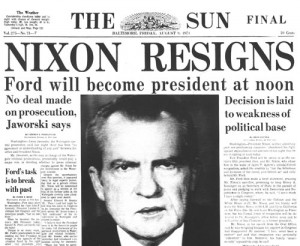 Chuck Colson’s testimony and his experience during the Watergate trial demonstrates this dynamic. First of all, for those who are not familiar with Watergate, President Nixon was forced to resign his Presidency in 1974 due to what was revealed as a criminal act perpetrated by members of his team illegally breaking into the Democrat campaign headquarters at the Watergate hotel. Chuck Colson was Special Counsel to the President and he was the first member of Nixon’s cabinet to serve time in prison for actions related to the Watergate scandal.
Chuck Colson’s testimony and his experience during the Watergate trial demonstrates this dynamic. First of all, for those who are not familiar with Watergate, President Nixon was forced to resign his Presidency in 1974 due to what was revealed as a criminal act perpetrated by members of his team illegally breaking into the Democrat campaign headquarters at the Watergate hotel. Chuck Colson was Special Counsel to the President and he was the first member of Nixon’s cabinet to serve time in prison for actions related to the Watergate scandal.
He later became a Christian and went on to accomplish some extraordinary things in the context of his “Prison Fellowship” ministry.13 His steadfast confidence in the reality of Christ’s resurrection was based in part on the reaction of His disciples in the aftermath of His being arrested. In a speech delivered to the National Religious Broadcasters Convention in 1984, he said:
Ehrlichman, Haldeman, Mitchell, myself and the rest believed passionately in the President. We had at our fingertips every imaginable power and privilege. I could phone an aide’s office and have a jet waiting at Andrews Air Force Base, order Cabinet members of generals around, change the budget.
Yet even at the prospect of jeopardizing the President, even in the face of all the privileges of the most powerful office in the world, the threat of embarrassment, perhaps jail, was so overpowering and the instinct for self-preservation so overwhelming, that one by one, those involved deserted their leader to save their own skin.
What has that got to do with the resurrection? Simply this: Watergate demonstrates human nature. No one can ever make me believe that 11 ordinary human beings would for 40 years endure persecution, beatings, prison, and death, without ever once renouncing that Jesus Christ was risen from the dead.
Only an encounter with the living God could have kept those men steadfast. Otherwise, the apostle Peter would have been just like John Dean, running to the prosecutors to save his own skin. He had already done it three times.
No, the evidence is overwhelming. Those men held to that testimony because they had seen Christ raised from the dead. And if indeed He was resurrected, that affirms His deity. As God, He cannot be mistaken in what He teaches and cannot lie. An infallible God cannot err. A holy God cannot deceive.14
Human nature prohibits men from willingly sacrificing their lives for something they know not to be true. And yet, history is full of men and women who have sacrificed their well being and even their lives for the cause of Christ. Why? Because they knew Jesus rose from the grave. Beginning with the disciples who were eyewitnesses and continuing with the martyrs who based their certainty on the evidence that history and nature provides, believers have stood by their convictions even to the point of death.
And it’s because of that certainty that the church has endured and it’s the fact that it has endured – despite the death sentence that has so often been associated with being a believer – that provides significant substance to the claim that “He has risen, He has risen indeed!”
H) Nothing Else Matters
Simon Greenleaf, famous Harvard professor of law, says: “All that Christianity ask of men…is, that they would treat its evidences as they treat the evidence of other things; and that they would try and judge its actors and witnesses, as they deal with their fellow men, when testifying to human affairs and actions, in human tribunals. Let the witnesses be compared with themselves, with each other, and with surrounding facts and circumstances; and let their testimony be sifted, as if it were being given in a court of justice, on the side of the adverse party, the witness being subjected to rigorous cross- examination. The result, it is confidently believed, will be an undoubting conviction of their integrity, ability and truth.”15 Jesus really did live, He really did die and He really did come back to life. By doing so He proved His claim to Divinity and the moment that a person recognizes this fact as a historical truism, it changes everything.
The great Methodist preacher, author and missionary of the past generation, Dr. E. Stanley Jones, described how he was once addressing an Indian University on the verities of eternity. When he sat down the thoughtful Hindu president stood up and sonorously solemnized, “If what this man says is not true, then it doesn’t matter. But if what he says is true, than nothing else matters.”16
Jesus really did live and He really did die and He really did come back to life. Compared to Christ’s Resurrection and the claims to Deity that were validated as a result, nothing else matters.

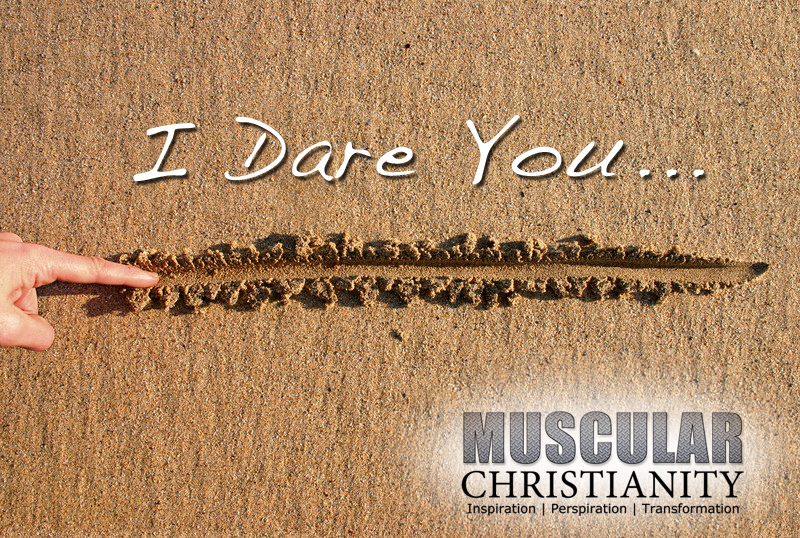
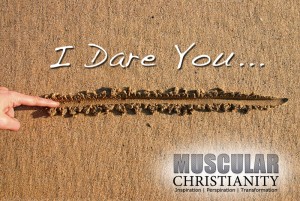
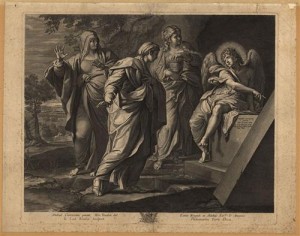

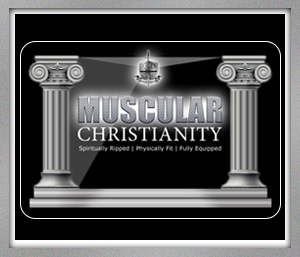



Leave a Reply
Want to join the discussion?Feel free to contribute!